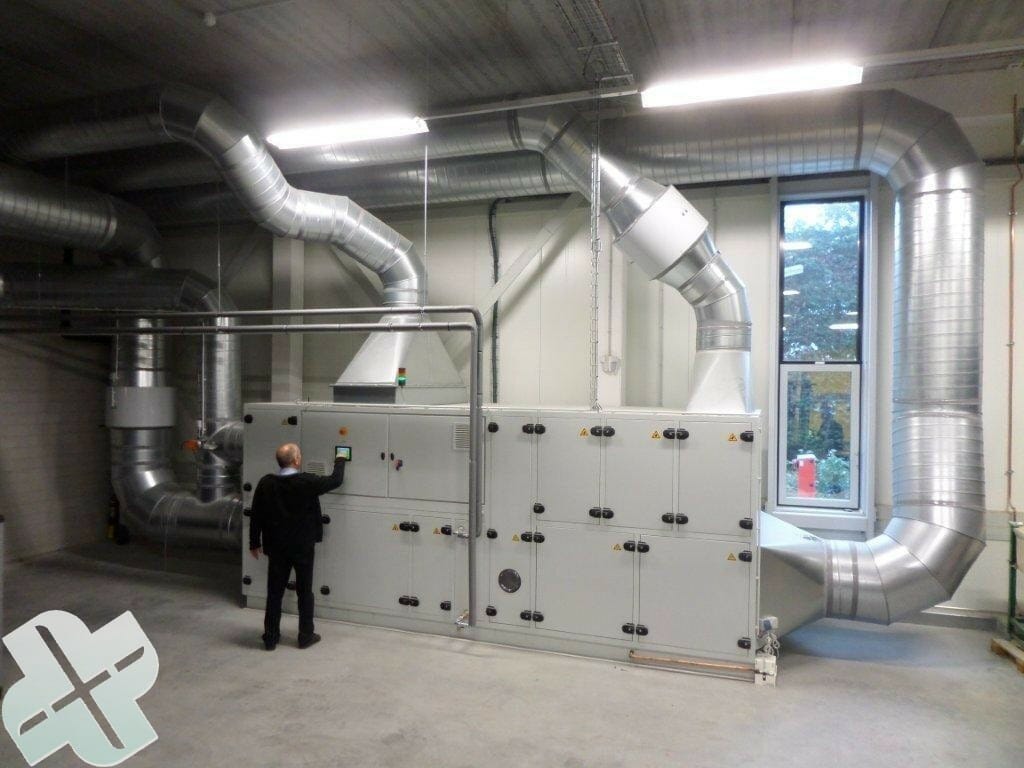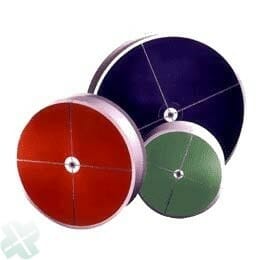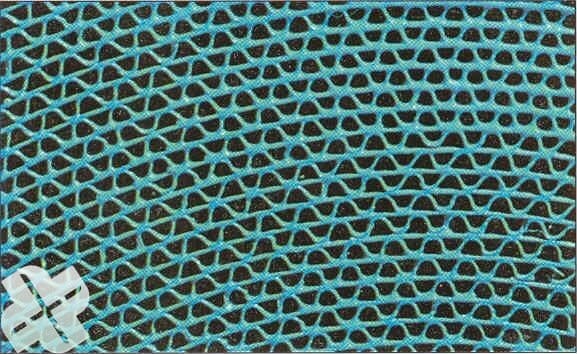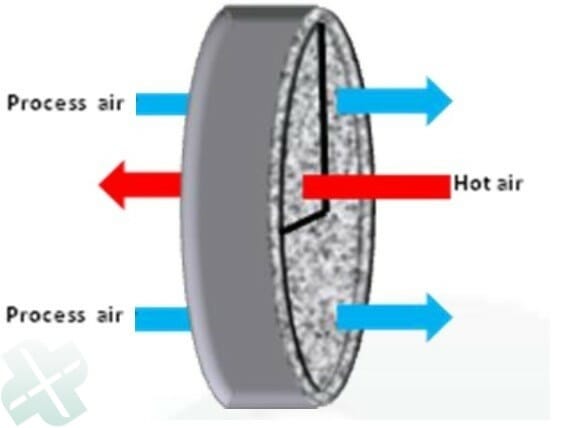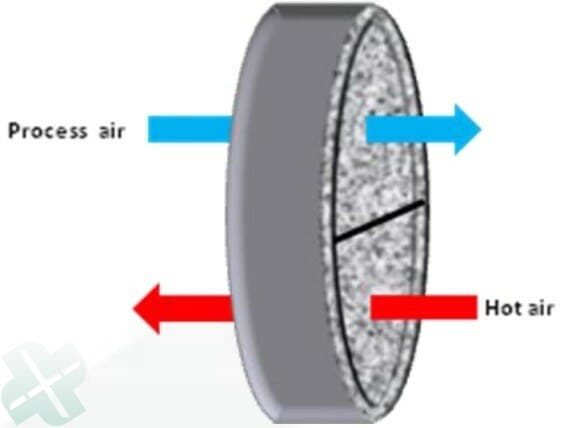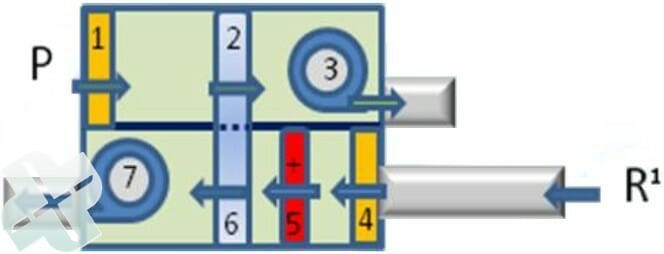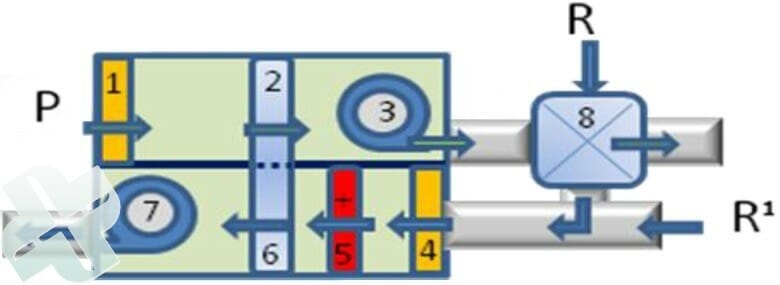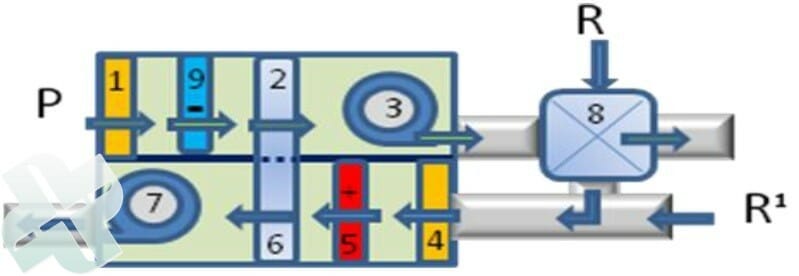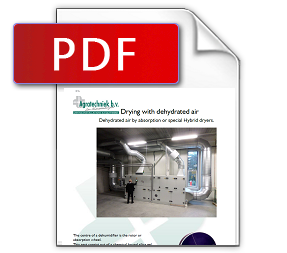
Drying with dehydrated air
Dehydrated air by adsorption or special Hybrid dryers.
Description rotor
The centre of an adsorption dehumidifier is the rotor or adsorption wheel. This part consist out of a chemical bound silica gel that can adsorb moisture out of the air that pass the rotor but can also release moisture during the regeneration process. After the regeneration process the rotor is ready to adsorb moisture again.
The structure of the rotor looks like a honeycomb pattern with a lot of small air channels. All these air channels make a big adsorption surface which takes care of the dehydration of the air that passes the rotor; the silica gel adsorbs water from the air.
The same rotor can also release moisture during the regeneration process.
The dryer is therefore divided in 2 levels. The rotor adsorbs moisture in the level for process air. The rotor turn in the level for the regeneration process where the rotor is being dried. After the regeneration process the rotor is ready to adsorb moisture again.
Regeneration of the rotor
The silica gel in the rotor cannot adsorb water unlimited. Nevertheless the adsorption and regeneration process is a continuing process. To make the adsorption process a continuing process the construction of the rotor is designed to adsorb water at 75 or 50% of the total surface of the wheel. 25 or 50% (depending the T° of the regeneration air) of the rotor is used for regeneration process (drying the rotor).
By rotating, each part of the rotor will absorb water and will later be dried by regeneration. The regeneration section is isolated from the adsorption section. By blowing hot air through the regeneration section, the adsorbed water will be removed from the rotor. The moist regeneration air will be evacuated through air-channels to outdoors.
Basic principle for Adsorption Dryers
P: Moist process air into the air dryer
1: Process air will be filtered
2: Process air will be dried by the rotor
3: Dry and (warm) process comes out of the
R: Regeneration airflow to dry the rotor
4: Regeneration air will be filtered
5: Regeneration air will be heated (60° or 120-150°C)
6: Regeneration air will dry the rotor
7: Moist regeneration air will be evacuated
8: Heat exchange unit
Option I) 8: Heat exchange unit brings proces air T° down to the ambiant level + 3°C. Free coming energy will be used to warm up regeneration air; Energy saving.
Option II) 9: Cold water battery (chiller) with modulated capacity can cool down the process air to any desired T°C. Hybrid system
Economically and modulating drying of air;
The hybride principle
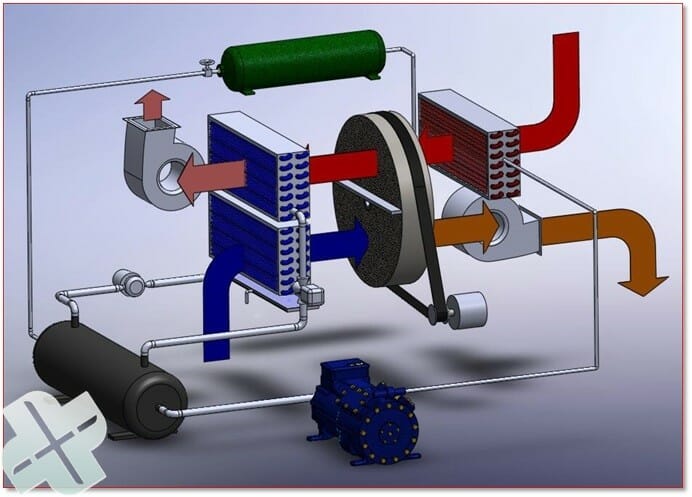
The hybride air dryer is specially developed to create very dry air with an constant (low) temperature of the process air. Process air is first being cooled, so water in the process air will condensate on the evaporator. After this, the process air at 100% HR will be dried to a low level by the absorption rotor. Because of high HR, the capacity of the adsorption rotor is at it’s maximum. The capacity of the evaporator is modulating; The process air will be cooled to a level by which the out coming process air is at the desired T°.
Regeneration air will be heated by the condenser (heat-pump) and an additional radiator with hot water. Less external heating is needed and all energy will be used; energy saving! The rotor will be dried by this hot air. A heat-exchange unit in the outlet of the regeneration air can pre-heat the extracted (cold) air for regeneration; extra energy saving!
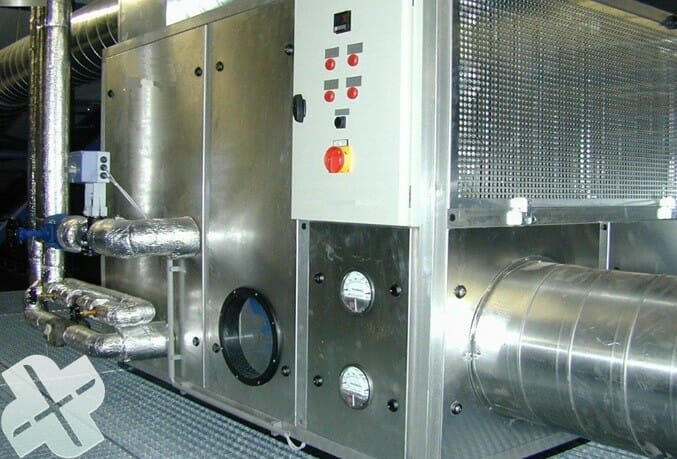
Hybride installation with heat-pump en heat-exchange units. Automatically extraction process-air direct from outside or by heat-exchange unit for maximum energy saving. Modulating heat-pump for 100% result in summer and winter.
Big advantage of adsorption air dryers is that the maintenance costs and frequency for services is low. Different air dryers can be used in several occasions were dry air is needed. We have mentioned some possibilities above. The final implementation and capacity depends which parameters are required. Regeneration process can be done by gas burner, hot water radiator or condenser (with extra radiator). Temperature can be controlled by installing a modulated air-air cross-exchanger, a cold water battery which must be connected to a cold water chiller or by a heat-pump installation. All controlled by the ABC processor.
Energy can be saved by installing a (modulating) air-air cross heat exchanger in the process air stream. The optimal and most economical air dryer is the ACR dryer from Agratechniek; When very dry process air (down to 1.5 gr/kg air) is needed at a low T° (down to 15-20°). Modulating capacity and energy saving!
 EN
EN
